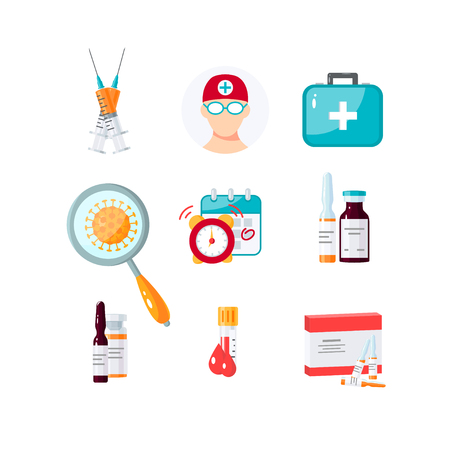Introduction to Post-Treatment Care for Injectables
When it comes to non-surgical aesthetic enhancements, injectable treatments such as Botox and dermal fillers have become increasingly popular among British men. However, the journey to achieving natural-looking results does not end in the clinic. Proper post-treatment care is crucial for ensuring optimal outcomes and minimising potential side effects. For men in the UK, understanding what to expect immediately after an injectable procedure—and adhering to recommended aftercare protocols—is essential. Post-treatment routines are designed not only to support healing but also to prolong the effects of your chosen treatment. In this article, we provide an overview of why tailored aftercare matters for British men and set clear expectations for the initial hours and days following your visit. Whether you are a first-timer or returning for a top-up, being prepared will help you make the most of your investment and maintain a polished yet subtle appearance that aligns with modern British standards.
Managing Common Side Effects
After receiving injectable treatments, it is entirely normal to experience mild side effects such as redness, swelling, or bruising. These reactions are generally short-lived, but knowing how to manage them can help you maintain your confidence and carry on with daily activities without fuss. Below, we outline practical steps tailored to the needs and routines of British men, taking into account the local climate and typical lifestyle.
Immediate Aftercare Steps
| Side Effect | Best Practice | British-Focused Advice |
|---|---|---|
| Redness | Apply a cool compress for 10–15 minutes at a time. | Avoid hot showers or saunas, especially after coming in from cold British weather. |
| Swelling | Keep your head elevated and avoid strenuous activity for 24 hours. | If commuting by Tube or bus, try not to lean against surfaces that may transfer heat or bacteria to treated areas. |
| Bruising | Use arnica cream or take over-the-counter remedies as recommended by your practitioner. | Wear a scarf or collar if you prefer to keep any marks discreet while out and about in public. |
Incorporating Care Into Your Routine
The British climate—often damp and cool—can actually benefit recovery by reducing inflammation naturally. However, always shield treated areas from harsh winds and UV exposure by wearing a hat or using an umbrella. When returning to work or social commitments, opt for minimal grooming products on treated skin for the first 24–48 hours. If you cycle or walk to work, consider allowing extra time for gentle travel and avoid excessive exertion immediately after treatment.
When to Seek Further Advice
Mild discomfort is expected, but should you notice persistent pain, severe swelling, or signs of infection (such as warmth and pus), contact your practitioner without delay. Most reputable clinics across the UK offer follow-up consultations; take advantage of these services if you have concerns.

3. Daily Activities and What to Avoid
After receiving injectable treatments, British men often wonder when it’s safe to return to their usual routines. It’s generally possible to resume work within a day, especially if your occupation doesn’t involve strenuous physical activity. For office-based roles common in the UK, such as finance or IT, most gentlemen can expect minimal disruption. However, if your job involves heavy lifting or significant physical exertion, it’s wise to consult your practitioner about specific timeframes.
When it comes to exercise, moderation is key. Light walking is acceptable after treatment, but intense workouts, running, or gym sessions should be avoided for at least 24-48 hours. This helps prevent swelling and ensures optimal results. Popular British activities such as football, rugby, or cycling should be postponed during this period. Swimming and saunas are best avoided for several days due to increased risk of infection or irritation.
Social engagements are an important part of British culture, but you may wish to avoid public events or gatherings immediately after your treatment, particularly if you experience redness or swelling. Gentlemen should also refrain from consuming alcohol for at least 24 hours post-procedure, as it can increase bruising. If you have a pub night or social function planned, consider scheduling your treatment with enough recovery time in mind.
In terms of skincare and grooming—a crucial aspect for many British men—avoid shaving directly over treated areas for at least 24 hours to reduce irritation. Also, steer clear of facial massages or treatments such as steam rooms and hot towels until your practitioner advises it is safe.
By following these tailored guidelines and being mindful of typical British routines and habits, you can help ensure the best possible outcome from your injectable treatment.
4. Skincare Routine Adjustments
After receiving injectable treatments, British men should take particular care in adjusting their skincare routines to support optimal recovery and maintain results. The UK’s unique climate—with frequent rain, variable temperatures, and lower levels of sunlight—requires a tailored approach. Below, we provide expert recommendations on adapting your daily regimen, focusing on gentle cleansing, effective moisturising, and diligent sun protection.
Cleansers: Go Gentle
Immediately after treatment, avoid harsh or exfoliating cleansers that may irritate sensitised skin. Opt for a mild, fragrance-free formula that effectively removes impurities without disrupting the skin’s barrier. This is especially important within the first 48 hours post-injectable.
Recommended Cleanser Types
| Type | Why It Works |
|---|---|
| Cream/Gel Cleansers | Soothe and cleanse without stripping natural oils; ideal for sensitive or post-procedure skin. |
| Micellar Water | No-rinse formula; gently lifts dirt and oil for easy cleansing. |
Moisturisers: Lock In Hydration
The often damp yet drying British weather can leave skin feeling tight or flaky after injectables. Choose a lightweight but hydrating moisturiser, ideally with ingredients like hyaluronic acid or ceramides to replenish moisture without clogging pores. Avoid heavy fragrances and active ingredients such as retinoids or acids until skin has fully settled.
Top Moisturising Ingredients for Post-Treatment Skin
| Ingredient | Benefit |
|---|---|
| Hyaluronic Acid | Binds water to the skin for long-lasting hydration. |
| Ceramides | Strengthen the skin barrier and prevent moisture loss. |
Sun Protection: Essential Even in the UK
Though Britain is known for its cloudy skies, UVA/UVB rays penetrate clouds and can affect healing skin. Use a broad-spectrum SPF 30 or higher daily, even on overcast days. Look for non-comedogenic formulas designed for sensitive skin. Reapply if you are spending extended time outdoors, especially during sunnier months from May to September.
Daily Post-Injectable Skincare Checklist
- Mild cleanser morning and night
- Hydrating, fragrance-free moisturiser twice daily
- Sunscreen every morning (SPF 30+), regardless of weather conditions
Adapting your routine with these steps will help reduce irritation and maximise the longevity of your injectable treatment results while taking into account the specific environmental factors faced by British men.
5. Recognising When to Seek Medical Advice
While most injectable treatments are safe when administered by qualified professionals, it is essential for British men to recognise the warning signs that warrant medical attention. Understanding these signs and knowing how to access appropriate healthcare resources within the UK can make a significant difference in outcomes.
Warning Signs to Watch For
After receiving injectables, you may experience some common side effects such as mild swelling, redness, or bruising at the injection site. However, certain symptoms should never be ignored. These include:
- Severe pain or increasing discomfort at the treatment area
- Signs of infection such as persistent redness, warmth, pus, or fever
- Sudden swelling that worsens rather than improves over 48 hours
- Blanching or discolouration of the skin (especially if it turns pale or blue)
- Visual disturbances or difficulty moving facial muscles
- Difficulty breathing or swallowing (seek emergency help immediately)
When Should You Consult a Professional?
If you notice any of the symptoms above, it is crucial to seek advice promptly. Early intervention can prevent complications and ensure optimal recovery. Even if you are unsure whether your symptoms are cause for concern, erring on the side of caution and consulting a professional is always advisable.
Accessing British Healthcare Resources
The NHS remains the primary point of contact for urgent medical concerns in the UK. For non-emergency issues, you can:
- Contact your GP surgery and request an urgent appointment
- Call NHS 111 for immediate guidance on symptoms and next steps
If you experience severe symptoms such as difficulty breathing, loss of vision, or rapid swelling, dial 999 or visit your nearest A&E department without delay.
Private Aftercare Options
If your treatment was performed privately, contact your practitioner or clinic directly for tailored aftercare advice. Reputable providers should offer clear aftercare instructions and be readily available for follow-up consultations. Remember to keep all documentation from your procedure handy, including aftercare leaflets and emergency contact details.
By staying vigilant and informed about potential complications, British men can ensure both their safety and satisfaction following injectable treatments.
6. Long-Term Maintenance and Follow-Up
For British men seeking to maintain a refreshed and natural look after injectable treatments, establishing a long-term care strategy is essential. Consistent post-treatment maintenance not only helps prolong the results but also ensures you continue to look your best with minimal effort.
Scheduling Review Appointments
It’s wise to book follow-up appointments with your practitioner before leaving the clinic. Most experts recommend scheduling a review every 3 to 6 months, depending on the type of injectables used and your personal goals. These reviews allow your practitioner to assess your progress, address any concerns, and make subtle adjustments as needed. Sticking to regular check-ins helps avoid overcorrection and ensures results remain balanced and tailored to your features—a hallmark of British understated style.
Maintaining Results Between Treatments
To keep your injectables looking their best, adopt a skincare regimen that includes daily cleansing, moisturising, and SPF protection—even during the famously cloudy British weather. Hydration is key: drink plenty of water and consider using products with hyaluronic acid or peptides to support skin health. Avoid excessive sun exposure and always wear sunscreen, as UV damage can accelerate signs of ageing and diminish treatment longevity.
Integrating Injectables into Your Grooming Routine
Injectables should complement—not replace—your overall grooming efforts. Regular shaving or beard trimming, haircuts at your local barbershop, and maintaining healthy lifestyle habits all contribute to an effortlessly sharp appearance. Treating injectable care as part of your broader grooming plan can help you achieve a consistent and refined look without appearing ‘done’ or artificial.
Top Tips for Long-Term Success
– Choose a reputable clinic with experience in treating male clients
– Keep communication open with your practitioner about changing aesthetic goals
– Avoid DIY touch-ups or unlicensed providers
– Schedule top-ups in advance so you never miss a beat
– Stay informed about new products and techniques relevant to men’s aesthetics
By approaching injectable maintenance with the same attention you give to other aspects of grooming, you can ensure long-lasting, natural-looking results that align perfectly with the modern British man’s style.


